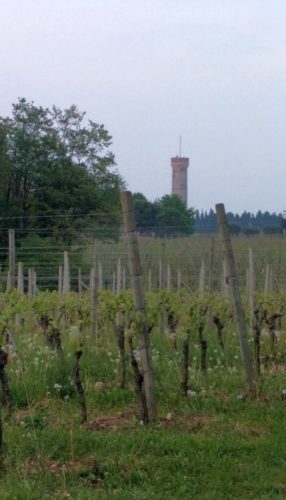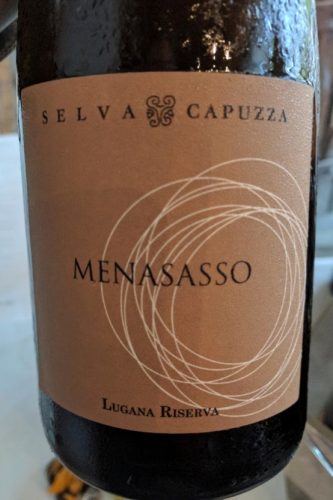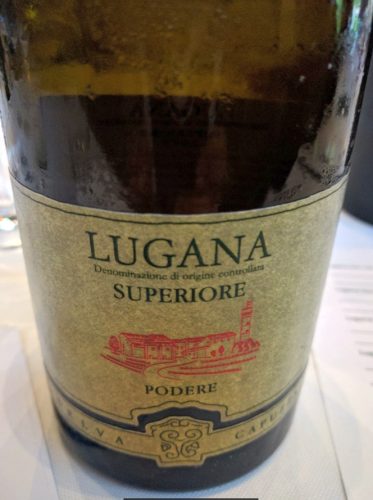Like most musicians (ask me how I know), Luca Formentini has a day job.
That job would be helping to helm his family’s wine business in Brescia: Selva Capuzza.
As far as day jobs go, the one with an office that’s actually a picturesque vineyard spot about four kilometers from the shores of Lake Garda, in the heart of Lombardy’s Lugana winemaking territory doesn’t seem so bad. To wit: he soft-spoken (by Italian standards) Formentini usually has a wide smile plastered on his face. After tasting his family’s Lugana offerings, you might have one, too.
2017 marks the 100th harvest for the Formentini family, who now focus on the Lake Garda region’s indigenous varieties, and with whom I tasted during a media trip to the region earlier this year. In the 1980s, they changed the name of the business to reflect the locality, and their main focus is the annual production of about 250,000 bottles of the decidedly tricky white Lugana.
Lugana’s has few better vectors for displaying its mischievous side than in the Formentini family’s wines. Tropical, vibrant, and mineral-driven in its youth, there’s little (other than the acidic scaffolding) in the young Selva Capuzza Lugana releases to betray the honeyed, toasty, and dazzling treat that awaits the more patient among us when a Lugana from a great vintage is allowed to rest on its haunches for several years…
In keeping with our musical undertone (see what I did there?), you can think of great Lugana as Nigel Tufnel’s 1959 guitar: the sustain is “quite unbelievable.” The best way to experience this is in tasting older ad younger vintages of Lugana side-by-side. The next best way is (arguably) to read about what that was like from someone who has recently done just that…
2016 Selva Capuzza “Selva” Lugana (Lombardy, $NA)
Thirty-five year-old vines produce the Turbiana that is used for this delightful white. At first, it’s all apples, wet rocks, and pepper, followed up by a mouthfeel that goes from fresh to lively to astringently pithy. This is a nice example of why good Lugana is often regarded as more texturally compelling than your average Italian white.
2013 Selva Capuzza “Menasasso” Lugana Riserva (Lombardy, $NA)
Moving back the clock just a hair with this Superiore, so designated because it’s seen at least 24 months of aging, we start to get some hints of the transmogrification that makes geeks like me get, well, geeky about Lugana. It’s heady and perfumed, with abundant mineral and floral notes, with somewhat more exotic fruit aromas. The honey blossom action alone is worth seeking it out, but you also get the added (and delicious) bonuses of toast, lemon rind, and dried tropical fruit flavors.
2005 Selva Capuzza Lugana Superiore (Lombardy $NA)
And with that, shit just got real – as in, real interesting. Golden in hue, honeyed of nose, this is a compelling, mature sensory experience. Dried fig, bruised apples, nuts, pineapple, peach, pepper, saline, toast… this is long, spicy, and drinking beautifully (if you have one, go ahead and pop that muthah open soon).
2001 Selva Capuzza Lugana Superiore (Lombardy $NA)
At sixteen years old, this white is in excellent form; interesting form, too. Lemon peel, nuts, wet stones, pepper, honey, and that signature toast are all vying for attention on the nose. Dried tropical fruits dominate the palate, with a nice, refreshing hint of saline to wash them down. Not quite as heady as the `05, being this good at this point in its development, focusing too much on minor cavils like that would just leaving on a sour note (sorry… couldn’t help myself…).
Cheers!
Shop Wine Products at Amazon.com
source http://www.1winedude.com/long-notes-selva-capuzza-recent-and-not-so-recent-releases/






No comments:
Post a Comment